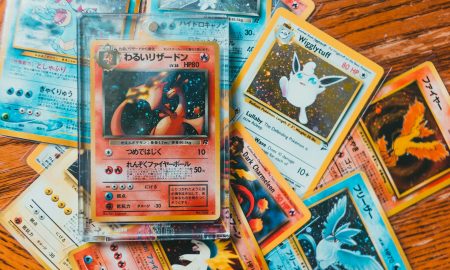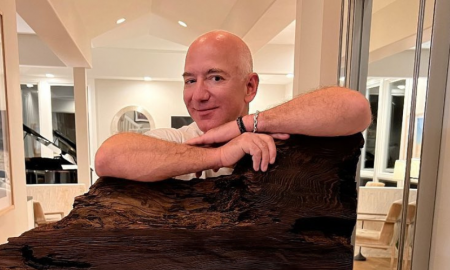
How to Build a Stable Portfolio With Alternative Investments

Markets swing. Your emotions follow. That is a dangerous combo. The truth is, panic can wreck your portfolio faster than a crash. The fix? A plan that keeps you calm and focused, especially when the ride gets bumpy.
This is where alternative investments come in. But they are not magic. To work, they need to fit into a smart strategy that puts your long-term goals front and center.
You can’t control the market. But you can control your reactions. Most people make the worst decisions when things get noisy, like selling low, chasing trends, and missing the point.

RDNE / Pexels / The goal isn’t to avoid risk, but to manage it. That means building a portfolio that is built for the long haul. One that rides the ups and downs without sending you into panic mode.
It begins with a strategy that aligns your needs with the right types of investments, including alternatives.
The Power of the ‘Bucketing Strategy’
Think of your money as sitting in three buckets. Each one has a job based on time, not trends. This keeps things clear and helps you stay cool under pressure.
Bucket 1 covers your next 10 years. This is your safety zone. Cash, bonds, low-risk stuff that won’t surprise you. Keep it simple. You will need this money soon, so don’t take big swings here.
Bucket 2 handles the 10 to 20-year stretch. This is your middle ground. It needs some growth, but also access if life throws you a curveball.
And Bucket 3 is where things get interesting. You won’t be able to touch this money for at least 20 years. That is your long game. This is the place for alternative investments, where time is on your side and patience pays off.
Alternatives Investments
Alternative investments don’t move like stocks or bonds. That is a good thing. When markets drop, they often hold steady or even rise. This helps you maintain a more stable overall portfolio.
Some alternatives, such as private equity, aim for substantial returns over time. Others, like real estate or commodities, offer protection against inflation. They may not be flashy, but they can be powerful over decades.
There is also a fun side. Investing in art, wine, or vintage cars adds passion to the process. If you enjoy the asset, you are more likely to hold it long enough to benefit.
What to Watch Out For
Nothing is free, and that includes alternatives. These investments come with tradeoffs. First, they are usually hard to sell quickly. That is why they stay in the long-term bucket. Don’t put money here that you might need soon.

Freepik / Fees can bite. Many alternatives charge more than traditional funds. Be aware of steep management costs and performance-based fees.
Minimums can also be high, so you need to be ready.
Start by knowing your time frames. Map out when you will need money. That is how you know what belongs in each bucket. It is the foundation for everything that follows.
Then, determine how much to allocate to alternatives. There is no perfect number. It depends on your goals, your tolerance for risk, and the amount of wealth you are working with. Ten to twenty percent of your long-term bucket is common for many investors, but your mileage may vary.
Due diligence is a must. Look into performance history, the experience of the fund managers, and how fees are structured. If something feels unclear, walk away. Remember, transparency is key.
More in Investments
-
`
Why Do Pokémon Cards Outperform the S&P 500 As an Investment?
Pokémon cards have outperformed the stock market by a mile. Since 2004, they have delivered a staggering 3,821% return, according to...
September 27, 2025 -
`
America’s Billionaires Get Older—Millennials Wait for Wealth Transfer
Many of today’s billionaires don’t match the youthful tech-founder image often portrayed. While names like Elon Musk, Sam Altman, and Mark...
September 21, 2025 -
`
Can President Trump Legally Fire Fed Governor Lisa Cook?
Lisa Cook is right in the middle of one of the most explosive legal battles in Washington. President Trump wants her...
September 20, 2025 -
`
Jeff Bezos’ Advice for Millennials Who Want Financial Success
Millennials today have grown up in a world where instant access to products and services is the norm. From two-day deliveries...
September 13, 2025 -
`
Maison Margiela’s First-Ever Celebrity Campaign Stars Miley Cyrus
Miley Cyrus just changed the rules again. In August 2025, she became the first celebrity ambassador in Maison Margiela’s 37-year history....
September 12, 2025 -
`
Should You Rely on AI for Financial Advice? Here’s What Financial Experts Say
AI is everywhere right now, and yes, that includes your wallet. From budgeting to retirement planning, tools like ChatGPT, Google Gemini,...
September 6, 2025 -
`
95% of Businesses Report Zero Returns on In-House AI, MIT Study Shows
U.S. companies have funneled an estimated $35 to $40 billion into internal AI projects. Yet according to a new report from...
September 6, 2025 -
`
Why Americans in Their 80s Are Still Job Hunting
Charles Meoni, at 82 years old, believes he still has the skills to drive an 18-wheeler. Yet he faces rejection after...
August 30, 2025 -
`
Are Bitcoin & Ethereum the Right Inflation Hedge You Can Count On?
An inflation hedge is something that keeps or gains value when the cost of living goes up. People used to say...
August 30, 2025















You must be logged in to post a comment Login